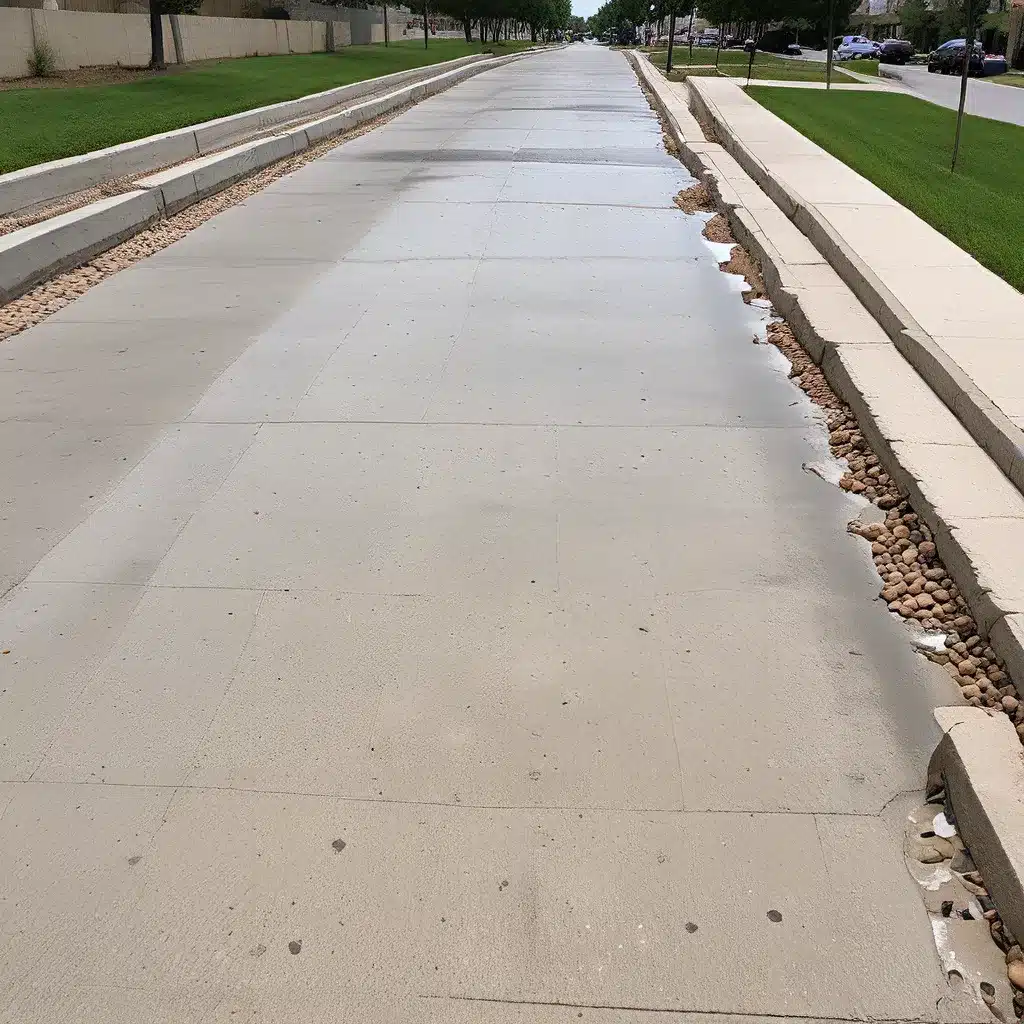
The Challenges of Stormwater Runoff in Kansas City
Kansas City, like many urban centers, faces a significant challenge when it comes to managing stormwater runoff. As the city has grown and developed, the increase in impervious surfaces, such as asphalt and traditional concrete, has led to a rise in the volume and velocity of stormwater flowing into the city’s drainage systems. This can contribute to problems like flooding, erosion, and the pollution of nearby waterways.
To address these issues, many cities have turned to green infrastructure and low-impact development (LID) strategies, such as the use of permeable concrete. This innovative material allows water to infiltrate the surface and percolate into the ground, reducing the overall volume of stormwater runoff and helping to recharge local groundwater supplies.
The Benefits of Permeable Concrete
Permeable surfaces like permeable concrete provide a range of benefits for Kansas City, including:
-
Reduced Stormwater Runoff: By allowing water to infiltrate the surface, permeable concrete helps to reduce the overall volume of stormwater runoff, reducing the burden on the city’s drainage systems and helping to mitigate the risk of flooding.
-
Improved Water Quality: As stormwater filters through the permeable concrete and the underlying soil, it helps to remove pollutants, such as sediment, oil, and heavy metals, before the water reaches nearby waterways.
-
Groundwater Recharge: The infiltration of water through permeable concrete can help to replenish local groundwater supplies, which is especially important in areas with limited water resources.
-
Reduced Urban Heat Island Effect: Permeable concrete can help to lower surface temperatures by allowing water to evaporate, which can have a cooling effect on the surrounding environment.
-
Enhanced Aesthetics: Permeable concrete can be designed with a variety of patterns and textures, allowing it to blend seamlessly with the surrounding landscape and enhance the overall aesthetic of a property or public space.
Implementing Permeable Concrete in Kansas City
To take advantage of these benefits, the Kansas City Water Services Department has implemented a sustainable green infrastructure demonstration project in the city’s Central Industrial District (CID), also known as the Historic West Bottoms. This project features a range of green infrastructure and low-impact development strategies, including the use of permeable pavers and pervious concrete in the parking areas.
The project was designed to address the city’s consent decree with the EPA to reduce the impact of sanitary sewer overflows, as well as to serve as a model for sustainable stormwater management practices that can be replicated throughout the city. By incorporating a variety of permeable surfaces, the project aims to minimize urban stormwater runoff and demonstrate the effectiveness of these strategies in a real-world setting.
The Cost Considerations of Permeable Concrete
One of the primary concerns when it comes to implementing permeable concrete is the potential for higher upfront costs. According to industry experts, the installation of permeable concrete, porous asphalt, and permeable pavers can cost significantly more than traditional concrete or asphalt, due to the need for a deeper rock base to accommodate the temporary storage of stormwater.
However, when considering the long-term benefits of permeable concrete, such as reduced maintenance costs, decreased need for stormwater infrastructure, and the potential for increased property values, the initial investment can often be justified. Additionally, there are various financing options and government incentives available to help offset the upfront costs of implementing permeable concrete in Kansas City.
Maintaining Permeable Concrete
One of the key considerations when using permeable concrete is the need for regular maintenance to ensure the material continues to function effectively. Over time, the spaces between the concrete pavers or the porous surface can become clogged with soil, debris, and other materials, reducing the infiltration rate and compromising the stormwater management benefits.
To address this challenge, specialized cleaning equipment, such as the Typhoon System, can be used to blast compressed air into the joints and then vacuum up the debris, effectively restoring the permeable surface. Regular sweeping and periodic inspections are also essential to keep permeable concrete performing at its best.
The Future of Permeable Concrete in Kansas City
As the city of Kansas City continues to grapple with the challenges of stormwater management, the use of permeable concrete is likely to become an increasingly important part of the solution. By demonstrating the effectiveness of these sustainable stormwater management practices through projects like the CID Green Infrastructure site, the city can inspire other homeowners, businesses, and developers to follow suit and incorporate permeable concrete into their own projects.
Moreover, as the regulatory landscape surrounding stormwater management evolves, with stricter requirements and incentives for adopting green infrastructure, the demand for permeable concrete and other LID strategies is expected to grow. By positioning itself as a leader in the adoption of these technologies, Kansas City can not only improve the resiliency and sustainability of its urban environment but also attract new investment and economic development opportunities.
Concrete Contractor Kansas City is committed to helping both residential and commercial clients in the area take advantage of the benefits of permeable concrete and other sustainable concrete solutions. By working closely with local experts, staying up-to-date on industry trends, and providing high-quality workmanship, we strive to deliver durable, environmentally-friendly concrete services that enhance the overall quality of life in Kansas City.

